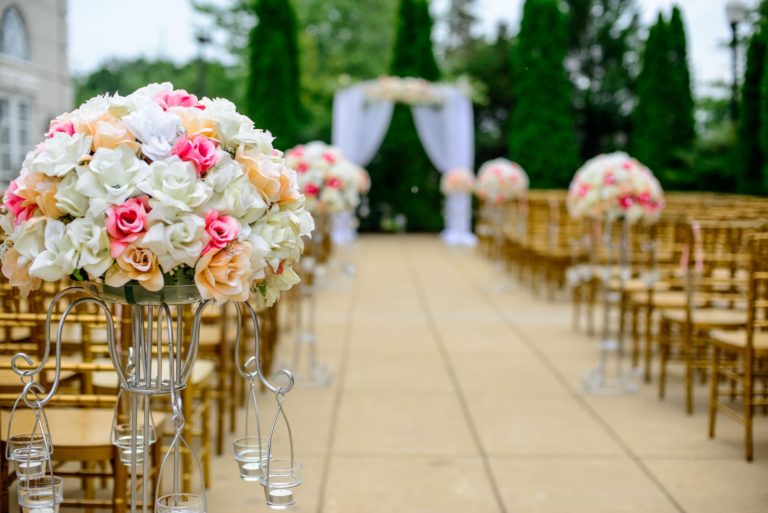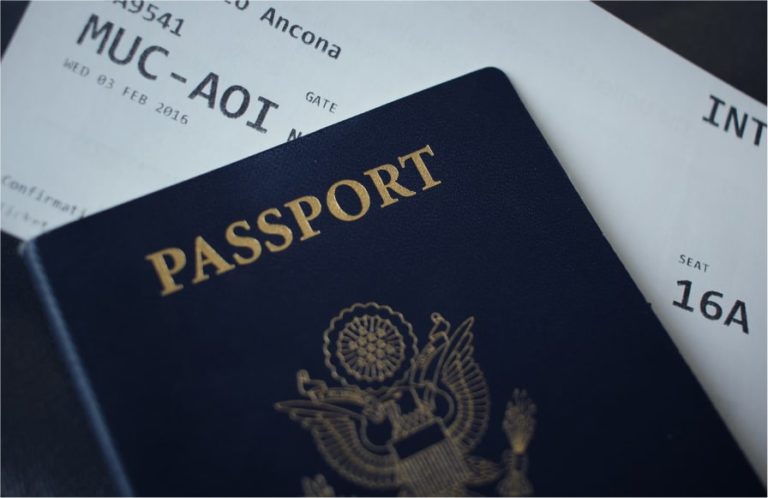Visiting My Spouse in the U.S.
While Waiting for a Green Card, Can I visit my Spouse in the United States?
- What to Expect While Visiting the United States?
- While the I-130 is Pending
- What if you have not filed the I-130 Petition yet?
- Additional Factors for Visa Approval
- How to prepare your visa application
- The 90 Day Rule
If you are waiting for your marriage-based green card application to be processed, you may still be able to visit your spouse in the United States. However, doing so can be challenging and comes with certain risks that must be carefully considered.
If you do not already have your tourist visa, you will need to apply for it. An immigration officer in the U.S. Consulate must be convinced that you intend to stay in the U.S. for a short period and leave before your entry validity period expires. This can be difficult if you are married to a U.S. citizen or permanent resident, as immigration officials will suspect that you are planning to stay in the country permanently. In many cases, tourist visa applications are denied, at the officer’s discretion, when filed while a green card/spouse visa is pending.
If you already have your tourist visa (or ESTA), once you arrive in the United States, you will be questioned by a Customs and Border Protection (CBP) agent at the border or port of entry. It is important to be truthful about your reason for visiting the country and never misrepresent your situation or lie about your marital status. Any falsehoods can seriously harm your chances of obtaining a green card in the future.
Even if you have a valid tourist visa, there is no guarantee that you will be granted entry into the United States. Some spouses seeking a green card have been denied entry when CBP agents discover that they are married to someone in the country and have a pending green card application.
It is essential to understand these risks before applying for a tourist visa and attempting to visit your spouse in the United States. In this guide, we will delve deeper into the potential challenges and obstacles you may encounter, as well as provide information on how to apply for a tourist visa and the common issues that arise during the process. By arming yourself with knowledge and carefully considering your options, you can make informed decisions and navigate the process more effectively.
The Our Love Visa Experience
Our Love Visa has a simple mission. We believe it should not be difficult or expensive to bring couples together. OLV has helped thousands of couples navigate the immigration process, and it would be a privilege to help you too.
What to Expect While Visiting the United States?
Spouses of U.S. citizens or green card holders, particularly those with a pending I-130 petition, may encounter greater scrutiny. This is especially true if you travel to the U.S. on a tourist visa, as the immigration officer processing your application/entry may suspect that you are attempting to circumvent the green card process by using a non-immigrant short-term visa to come to the U.S. with the intention of immigrating permanently.
Walking this tightrope requires a thoughtful and strategic approach. In this guide, we will explore the specific challenges of visiting the United States while you have a pending I-130 petition and provide advice on how to present the strongest possible case for admission. By understanding the risks and taking steps to mitigate them, you can increase your chances of success and reuniting with your spouse in the United States.
While the I-130 is Pending
When you have a pending I-130 petition, visiting the United States can feel like a balancing act. On one hand, you are seeking to make the country your permanent home once you receive your green card. However, you must convince the immigration officer or CBP agent that you will not be overstaying your tourist visa and your intention for visiting is not to settle in the United States on that entry.
This can be particularly challenging if you have already resigned from your job or sold all of your belongings in your home country. For this reason, many people opt to visit the United States before taking such significant steps.
You may be asked to provide proof that you intend to return to your home country after your visit to the United States. This may include documentation of employment or education commitments, property ownership, and familial ties. However, even with a truthful and compelling case, there is always a risk of denial, as admission into the United States is never guaranteed.
What if you have not filed the I-130 Petition yet?
Even if you have not yet initiated the marriage-based green card process by filing an I-130 petition, you may still be questioned about your intentions for visiting the United State and encounter additional scrutiny when applying for a tourist visa or when entering the United States.
Here are some tips to increase your chances of being admitted into the U.S.:
- Be honest and upfront about your intentions: If you do not have immediate plans to live permanently in the United States, it is important to make that clear in your tourist visa application. Lying or misrepresenting your intentions could result in denial of entry and jeopardize your future eligibility for a green card.
- Show ties to your home country: Providing evidence that you have significant ties to your home country can help demonstrate that you do not intend to overstay your tourist visa. This may include documentation of employment or educational commitments, property ownership, and familial and community relationships.
- Have a confirmed travel plan: It is recommended to have a well-documented travel plan that includes a clear date of return to your home country. This can help convince immigration officials that you have no intention of staying in the United States beyond the authorized period of your visa.
By being prepared and providing strong evidence of your intent to return to your home country, you can increase your chances of being admitted into the United States as a tourist.
Additional Factors for Visa Approval
When applying for a tourist visa or trying to enter the United States, there are other factors that can affect your chances of approval besides your pending I-130 petition or the evidence you provide to convince the immigration officer or CBP agent that you plan to return to your home country. Some of these factors are:
- Your Immigration History: Your past record of entering and leaving the United States can play a significant role in whether your tourist visa application will be approved. If you have a history of following the rules and not violating your visa status, you’re more likely to be seen as a low-risk applicant who intends to visit the United States temporarily. However, if you have ever overstayed a visa or violated any immigration law, your chances of approval will decrease significantly. It’s crucial to be truthful about your immigration history and disclose any prior violations or denials in your application.
- Your Country of Origin: The country you come from can also impact your chances of approval. If your home country has a history of high immigration fraud, the immigration officer or CBP agent may be more suspicious of your intentions, even if you have no previous immigration violations. Countries such as Brazil, China, the Dominican Republic, India, and Mexico have been identified as having higher rates of immigration fraud in the past, but there’s no official list of such countries. To overcome this hurdle, you need to demonstrate strong ties to your home country, such as a job, a business, property, or family obligations, and provide supporting documentation in your application.
- Other Relatives in the United States: If you have close relatives who are U.S. citizens or green card holders and already live in the United States, this could also raise red flags. The immigration officer or CBP agent may assume that you’re more likely to overstay your visa or adjust your status to become a permanent resident. To counteract this suspicion, you need to show that you have compelling reasons to return to your home country after your visit, such as a job, studies, or family ties. Having a return ticket with a fixed date can also help reassure the officer that you don’t plan to overstay.
While it’s possible to visit the United States while your marriage-based green card application is pending, there are several challenges and risks involved. You need to carefully plan and prepare your tourist visa application, provide strong evidence that you intend to visit only temporarily and be truthful and transparent about your immigration history, ties to your home country, and reasons for visiting. Even with all these precautions, there’s no guarantee of approval or admission, and any misrepresentation or violation of your visa status can have severe consequences on your future eligibility for a green card or other U.S. visas.
How to prepare your visa application
If you apply for a tourist visa or enter the United States under the Visa Waiver Program, you must prove that you plan to return home after your visit, that your visit will be temporary and short, and you will be able to support yourself financially during your stay.
The following are some of the things that you may be asked to provide to establish strong ties to your home country:
- A copy of an unexpired lease or home mortgage
- A letter from your employer stating the dates of your vacation, including when you’ll return to work
- School enrollment confirmation in your home country for either yourself or your children
- Proof that your children are staying in your home country during your visit, such as a letter giving a grandparent consent to make decisions for your children
- Title deeds for any property you own in your home country
- Copies of your bank statements, credit card statements showing healthy spending limits, or other proof that you’ll be able to support yourself financially during your visit.
If you change your mind about returning home and applying for a green card from within the United States, your application will not necessarily be denied. However, you will need to prove that you changed your mind for legitimate reasons.
The 90 Day Rule
The “90-day rule” is a guideline that USCIS uses to decide how much extra scrutiny to give to green card applications from spouses who entered the United States on a tourist visa. Under this rule:
- Engaging in unauthorized employment
- Enrolling in an unauthorized course of study (without a proper student visa)
- Entering into a marriage with a U.S. citizen or green card holder
- Filing an “adjustment of status” green card application (Form I-485)
Any of these activities within the first 90 days of entering the United States on a temporary visa may be considered a violation of your temporary visitor status.
If any of the above activities take place within 90 days of entering the United States on a temporary visa, USCIS will presume that you “willfully misrepresented” your intention for visiting. You will need to disprove such a presumption and submit evidence to overcome it. Otherwise, a USCIS officer could deny your marriage-based green card application or even revoke your tourist visa.
Your fiancé or fiancée can come to the United States on a tourist visa. However, if you have a pending K-1 visa application, waiting for your fiancé(e) to enter the United States on a K-1 visa may be better. The K-1 visa is specifically designed for fiancés or fiancées of U.S. citizens, and it allows them to enter the United States for the purpose of getting married.
If you decide to bring your fiancé(e) to the United States on a tourist visa while your K-1 visa is pending, remember that they will need to follow the same rules as other tourists. They will need to demonstrate that they intend to return to their home country after their visit, and they will need to show that they have sufficient funds to support themselves during their stay.
Additionally, it’s important to note that although getting married while on a tourist visa is allowed, it will void your fiance visa application. If you decide to marry during your fiancé(e)’s visit, you must file for a marriage-based green card/visa instead of the K-1 visa.

Our Love Visa makes your immigration process easy, fast, and worry-free, guaranteed. We provide you with complementary tools and resources free that help you plan your future in the United States together. Learn about how OLV is helping couples through their immigration journey.







